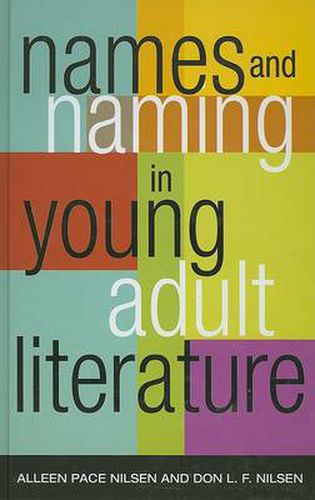Readings Newsletter
Become a Readings Member to make your shopping experience even easier.
Sign in or sign up for free!
You’re not far away from qualifying for FREE standard shipping within Australia
You’ve qualified for FREE standard shipping within Australia
The cart is loading…






This book shows how authors of young adult literature use the creation of names for people, places, events, inventions, animals, and imaginary concepts as one of their most important literary techniques. Chapters address how authors use names to stretch readers’ emotions, to reveal ethnic values and differences, to create other worlds, and to establish tone. Other chapters focus on how authors use names to help readers remember who is who, such as J. K. Rowling in the Harry Potter books, or to communicate separate messages to adults and to young readers, as exemplified by Richard Handler in the Lemony Snicket books. Names and Naming in Young Adult Literature equips readers with the interest and the skill to make similar observations about names and naming when they read other books. Looking at the names an author has chosen to use is a wonderful first step in introducing readers to the concept of literary criticism as something to help readers get more pleasure and information from their reading. Public and school librarians, college instructors of young adult literature, teachers of creative writing, high school English teachers, and anyone else who is interested in young adult literature will find this book extremely interesting.
$9.00 standard shipping within Australia
FREE standard shipping within Australia for orders over $100.00
Express & International shipping calculated at checkout
This book shows how authors of young adult literature use the creation of names for people, places, events, inventions, animals, and imaginary concepts as one of their most important literary techniques. Chapters address how authors use names to stretch readers’ emotions, to reveal ethnic values and differences, to create other worlds, and to establish tone. Other chapters focus on how authors use names to help readers remember who is who, such as J. K. Rowling in the Harry Potter books, or to communicate separate messages to adults and to young readers, as exemplified by Richard Handler in the Lemony Snicket books. Names and Naming in Young Adult Literature equips readers with the interest and the skill to make similar observations about names and naming when they read other books. Looking at the names an author has chosen to use is a wonderful first step in introducing readers to the concept of literary criticism as something to help readers get more pleasure and information from their reading. Public and school librarians, college instructors of young adult literature, teachers of creative writing, high school English teachers, and anyone else who is interested in young adult literature will find this book extremely interesting.